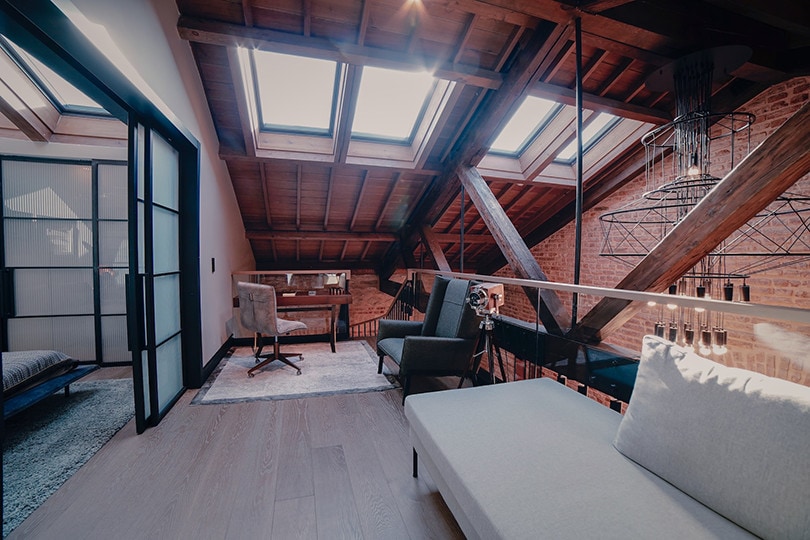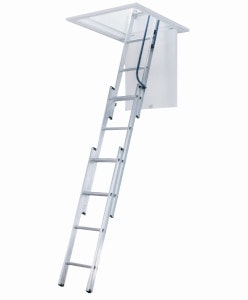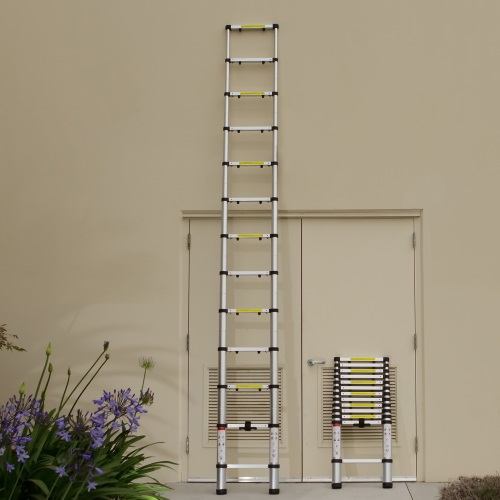What Is a Scuttle Attic? Types, Facts, & FAQ
-
Ed Malaker
- Last updated:

There are many different rooms in the standard home, from the kitchen to the living room, and most of us can figure out what they are for. However, if you are thinking about purchasing a new home and are looking at the description of a house, you might be surprised to see something called a scuttle attic. This is an ordinary attic with a unique entranceway, but keep reading as we explain how to enter these rooms and why you would want a scuttle attic in your home.
How Does It Work?
If you walk through the upstairs of a house and see a strange square in the ceiling, you are looking at a scuttle attic entrance. That square is a door that you can push open with a broom handle or another object or pull down using a handle or rope. If it is the pull-down type, it will have a foldup ladder that will be exposed and that you can use to enter the attic. If it is the push-open type, you will need to use a standalone ladder. The square opening is the scuttle, and the area that it grants access to is the attic.

What Are the Different Types of Scuttle Attics?
Access-Point Scuttle Attic
The access-point scuttle attic is the least expensive option because it is simply a hole in the attic floor with a piece of drywall covering the opening. You will need a ladder to open the door and get into the attic. This type of opening is good for tight spaces that might not have room to hold a ladder. It’s also a good choice if you don’t intend to use the attic outside of regular inspections.
Drop-Down Ladder
The drop-down-ladder scuttle attic is more expensive to install because the hole tends to be much larger, and the door needs to hold a fold-away ladder while remaining easy to open and close, which usually involves springs. The entire mechanism will also take up much more space than an access-point scuttle attic, so it’s only suitable for large rooms. This access point is essential if you intend to use the attic space regularly and need to carry heavy objects up and down.
Where Is It Used?
Though a scuttle attic is typically to access the attic in a house, as the name suggests, they can also provide access to hidden storage areas in a garage and other structures. Any time that you need access to a new floor but don’t have the space to install a flight of stairs, you can use a scuttle attic to get there.
Advantages of a Scuttle Attic
Space Saving
One of the biggest advantages of a scuttle attic is that it doesn’t take up any space on the floor below. You won’t need to install a stairway, giving you more room and a more open floor plan.

Less Expensive
The scuttle attic is also less expensive than a stairway, even if you use the type with the fold-away ladder. You can also probably install an access point scuttle attic without hiring a professional, as it’s little more than a square hole with a drywall doorway.
Disadvantages of a Scuttle Attic
The disadvantage of a scuttle attic is that it can be difficult for some people to get into the attic due to the need to climb a steep ladder. The climb can also make it challenging to safely get objects in and out of the attic, and some holes are too small to fit through comfortably. You might also experience problems with a pull-down ladder because the springs and other mechanisms wear out. You will need to perform routine maintenance on it, cleaning and lubricating the components to keep it operating correctly. Installing the pull-down ladder can also be complex, requiring professional help. Another downside is that it can be difficult to properly insulate the door so cold and hot air doesn’t escape the attic, especially if you do a DIY installation.
Frequently Asked Questions (FAQ)
Where Do I Place a Scuttle Attic?
You can place the hole for your scuttle attic anywhere on the second floor, where doing so will enable you to enter the attic. Most people choose a location that is out of the way but easy to access. You will often find the scuttle attic in a hallway or large walk-in closets with enough room for a ladder to fold down.
What Is the Difference Between a Scuttle Attic and a Regular Attic?
A regular attic is a room, or the top floor, in your house. A scuttle attic is an ordinary attic with a specific access point, the scuttle, which is essentially a hole in the attic floor. To access the attic, homeowners use a ladder to reach and move through the scuttle into the attic. In some cases, a fold-away ladder is part of the scuttle door.
How Do I Insulate an Attic Scuttle?
Most professionals use foam board and weather stripping on the scuttle door to provide suitable insulation to prevent hot and cold air from moving into your home from the attic. Otherwise, this can dramatically affect your heating and cooling costs. Hot air escaping during the summer months will strain your air conditioning unit, while the cold air in the winter will keep kicking on the furnace.

What Is the Required Opening Size for a Scuttle Attic?
While some scuttle attic openings are almost too tiny to fit through, modern building codes state that the opening should be at least 22 x 30 inches. There must also be 30 inches of space above the door, according to the 2012 International Residential Code. A larger opening will make it easier to carry boxes up and down, but it can also be harder to insulate.
Conclusion
A scuttle attic is an attic with a specific entranceway. Instead of stairs or a door, a scuttle attic grants access through a square hole in the ceiling that you usually find in a hallway or walk-in closet. The hole will have a door that can hold a fold-away ladder, or it may only be a piece of insulated drywall, so you need to provide the ladder separately. It’s a convenient option for homeowners because it increases space on the floor below, since you don’t need to create a stairway, and it’s also less expensive. The downside is that it can be hard to insulate and difficult to get storage items in and out of the attic when you need them.
Featured Image Credit: Procreators, Shutterstock
Contents



